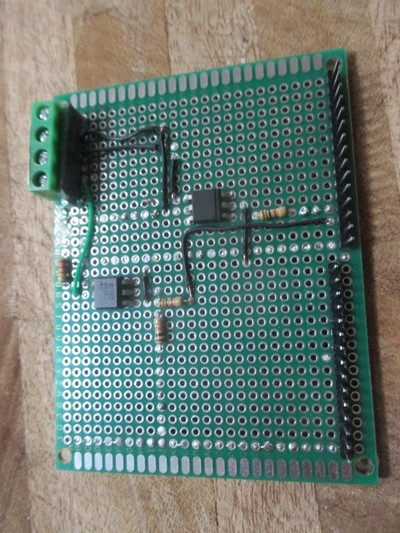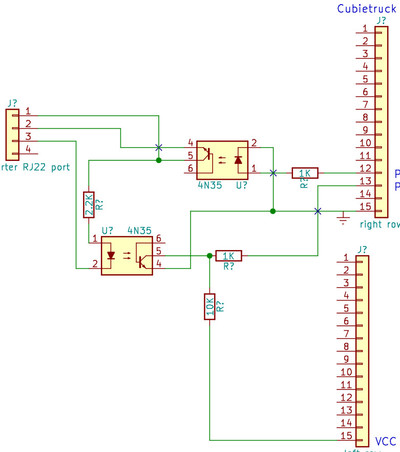I recently upgraded my inverter to a AIMS 1500 watt pure sine inverter (PWRI150024S). This is a decent inverter for the price, I hope. It seems reasonably efficient under load compared to other inverters. But when it's fully idle, it still consumes 4 watts of power.
That's almost as much power as my laptop, and while 96 watt-hours per day may not sound like a lot of power, some days in winter, 100 watt-hours is my entire budget for the day. Adding more batteries just to power an idle inverter would be the normal solution, probably. Instead, I want to have my house computer turn it off when it's not being used.
Which comes to the other problem with this inverter, since the power control is not a throw switch, but a button you have to press and hold for a second. And looking inside the inverter, this was not easily hacked to add a relay to control it.
The inverter has a RJ22 control port. AIMS also does not seem to document what the pins do, so I reverse engineered them.
Since the power is toggled, it's important that the computer be able to check if the inverter is currently running, to reliably get to the desired on/off state.
I designed (well, mostly cargo-culted) a circuit that uses 4n35 optoisolators to safely interface the AIMS with my cubietruck's GPIO ports, letting it turn the inverter on and off, and also check if it's currently running. Built this board, which is the first PCB I've designed and built myself.
The full schematic and haskell code to control the inverter are in the git repository https://git.joeyh.name/index.cgi/joey/house.git/tree/. My design notebook for this build is available in secure scuttlebutt along with power consumption measurements.
It works!
joey@darkstar:~>ssh house inverter status
off
joey@darkstar:~>ssh house inverter on
joey@darkstar:~>ssh house inverter status
on
Update fall 2020: This inverter died after 2.5 years of daily light use. While it's possible this control had something to do with it, it seems more likely that it was value engineered to not last much longer than its 2 year warantee period.

